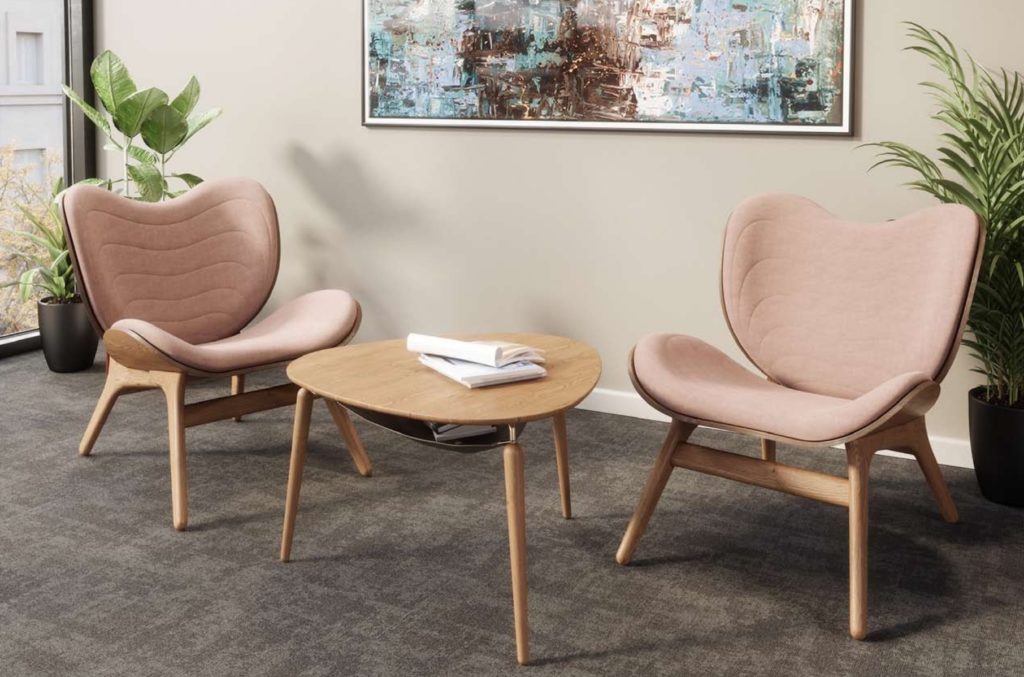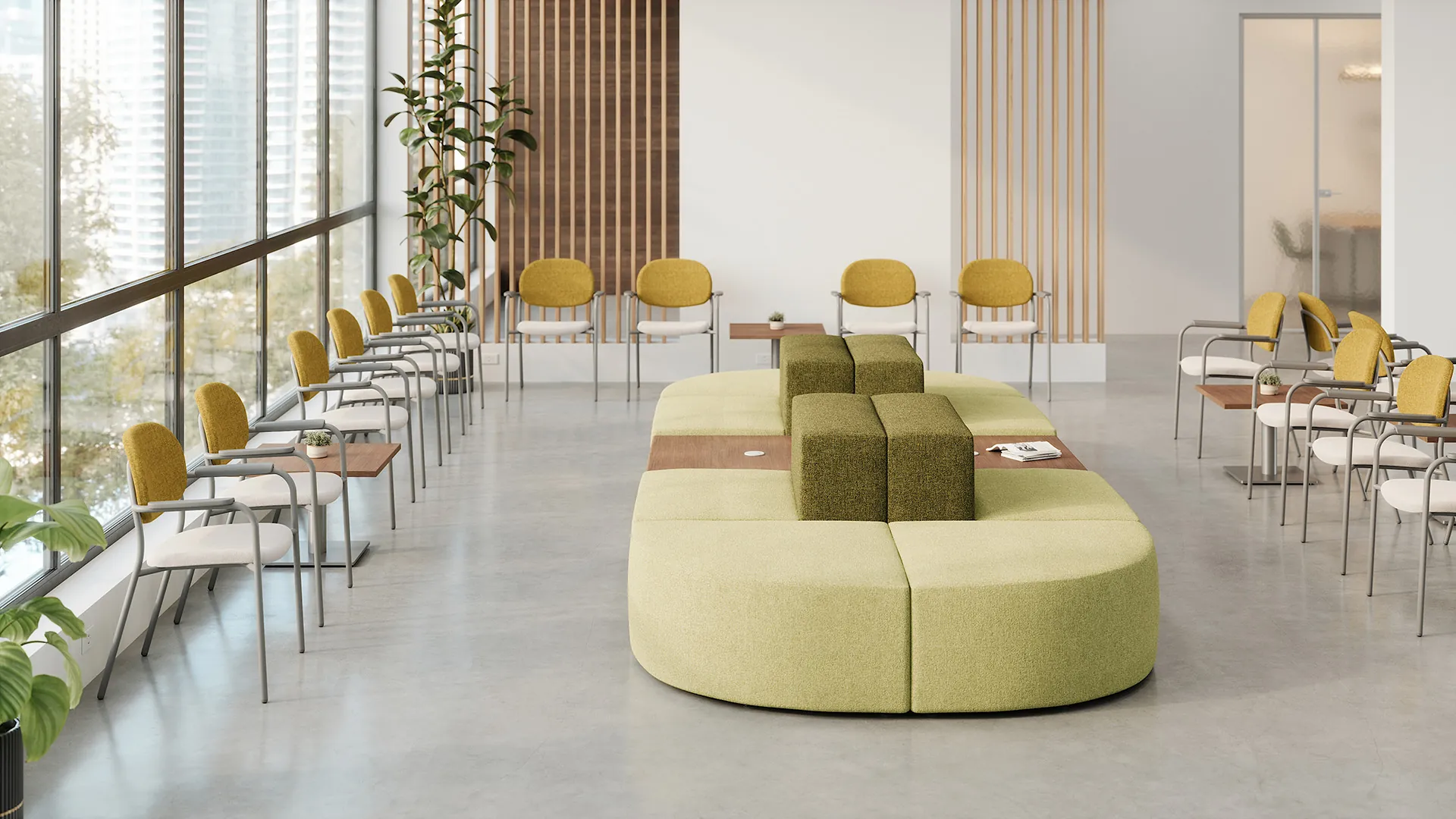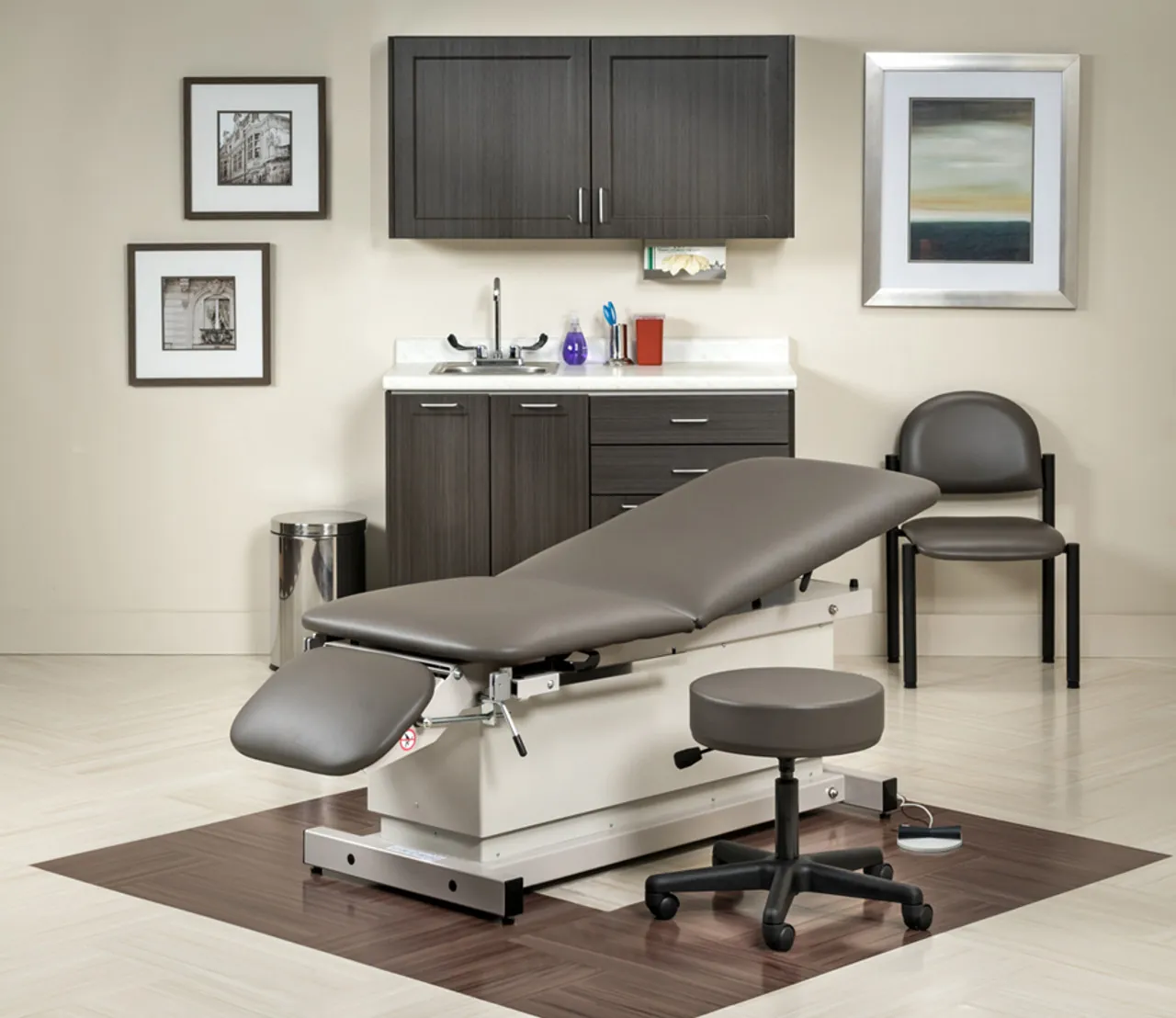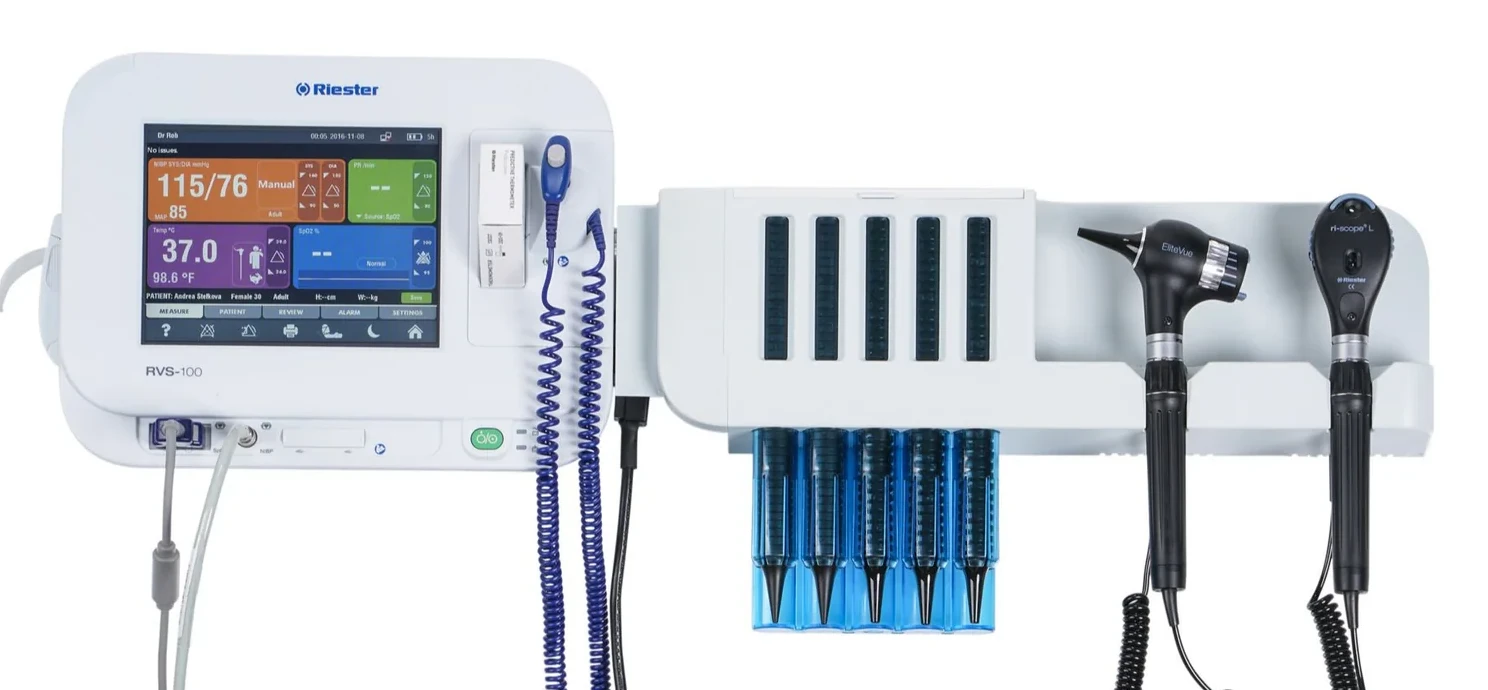"All the patient sees is the incision"
The healthcare landscape is becoming extremely competitive. Patient loyalty is no longer a given. With an increasing number of healthcare providers battling for their attention, patients have more choices than ever before. They are no longer simply accepting whatever is offered. Instead, they are actively seeking out practices that provide not only (or even not so much) excellent medical care, but also a positive overall experience.
Clinical expertise remains paramount. Still, it is often the seemingly superficial things that influence patients' perception. Ambiance of your waiting room or the efficiency of your examination room can significantly change patient satisfaction. Patient satisfaction, in turn, affects your bottom line. Are you inadvertently pushing patients out the door with a dated or disorganized environment? Or worse, are your competitors offering a more welcoming and technologically advanced experience, effectively poaching your patient base? Let us discuss how the physical environment of your practice can profoundly impact patient perception and, therefore, your long-term success.
The Silent Signals: What Is Your Waiting Room Communicating?
Your waiting room is the initial "handshake" your practice extends to every patient. This is the first impression they form, and it sets the tone for their entire visit. A clean, comfortable, and well-organized waiting room communicates professionalism, respect for patients' time, and a commitment to their well-being. On the other hand, a neglected, cluttered, or aesthetically unappealing space can create anxiety and resentment.
Unwelcoming environment often prompts patients to question the quality of care they expect to receive. It can make them feel like their time and patronage are not valued. Even more critically, patients may think that the practice itself and the care it provides might be outdated. Would it be surprising if they switch to a different clinic?
Here are some critical areas to consider when evaluating your waiting room:
- Cleanliness - It's Non-Negotiable: This should be a given, yet it's surprising how frequently cleanliness is overlooked. Dust bunnies gathering in corners, stained carpets, overflowing trash receptacles, and sticky surfaces send a clear and negative message: this practice doesn't prioritize hygiene. Patients instinctively equate cleanliness with the quality of care. If the waiting room is visibly unclean, they may reasonably assume that the clinical areas, where they'll be most vulnerable, are equally neglected. Ensure that your staff is diligent about maintaining a tidy and sanitary environment throughout the day. Regular spot checks and quick cleanups between patients can make a significant difference.
- Comfort - It's Not Just Furniture: Hard, uncomfortable chairs, inadequate seating, and a cramped or poorly arranged layout can make waiting feel like an agonizing eternity. Prioritize comfortable, ergonomic seating with ample space for patients to relax and stretch. Consider offering a variety of seating options to accommodate diverse needs, such as chairs with armrests for those with mobility issues or smaller chairs for children. Beyond the furniture, consider the ambient temperature. Is it too hot or too cold? Is there sufficient ventilation? Small details like these can dramatically impact patient comfort and overall satisfaction.

A section of a healthcare waiting area by one of our suppliers - KFI Studios
- Aesthetics: Creating a Welcoming Atmosphere: The decor of your waiting room contributes significantly to the overall patient experience. A sterile, impersonal, and visually boring space can feel cold and unwelcoming, heightening anxiety. Consider incorporating calming colors and tasteful artwork. Include strategically placed plants to create a more relaxing and inviting atmosphere. Soft, indirect lighting can also contribute to a sense of tranquility. A well-designed space can help alleviate patients' worries and make the wait feel less burdensome.
- Amenities: Enhancing the Patient Experience: While not strictly essential, offering thoughtful amenities can significantly enhance the patient experience and demonstrate that you value their time. Wi-Fi access, a television playing informative or entertaining content, a curated selection of current magazines and newspapers, and a readily available water dispenser are all appreciated by patients. Consider offering a designated children's area with age-appropriate toys and books to keep younger patients occupied and reduce parental stress. These seemingly small touches can contribute to a more positive and patient-centric environment.
- Organization and Information: Streamlining the Experience: A cluttered or disorganized waiting room can induce feelings of overwhelm and anxiety in patients. Ensure the space is well-organized, with clear signage directing patients to registration, restrooms, and other key areas. Provide easy access to relevant information, such as brochures on common health topics, practice policies, and even estimated wait times. A well-organized waiting room communicates efficiency, professionalism, and respect for patients' time.

A larger healthcare waiting area by one of our suppliers - KFI Studios
Beyond the Waiting Room: The Examination Room Experience – Where Trust is Built
While the waiting room sets the initial impression, the examination room is where the crucial doctor-patient interaction happens. This is where trust is either solidified or eroded. This is where patients are most vulnerable. In the examination room, they form their most lasting opinions about the quality of care they are receiving. Cleanliness, organization, and the presence of modern equipment are even more critical in this space:
- Sterility and Cleanliness - An Absolute Must: Patients rightfully expect the examination room to be impeccably clean and sterile. They're in a vulnerable position and need to trust that the environment is hygienic and safe. Ensure that all surfaces, including examination tables, countertops, and medical equipment, are thoroughly cleaned and disinfected between each patient. Pay particular attention to high-touch areas, such as doorknobs, light switches, and faucet handles. Make sure that medical instruments are properly sterilized and stored. The overall appearance of the room should convey an unwavering commitment to hygiene.
- Privacy and Comfort - Fostering Open Communication: Patients need to feel completely comfortable and secure discussing sensitive medical issues. Ensure that the examination room provides adequate privacy, both visually and audibly. Consider the layout of the room and ensure that conversations cannot be overheard by other patients or staff. The room should also be a comfortable temperature and well-lit to facilitate both the examination and the patient's comfort.

An examination room by one of our suppliers - Clinton Industries
- Modern Equipment and Technology - Inspiring Confidence:
- Having access to modern and well-maintained medical equipment can significantly instill confidence in patients. It suggests that the practice is up-to-date with the latest advancements in healthcare and committed to providing the best possible care. This might include digital diagnostic tools, advanced imaging equipment, or even point-of-care testing devices.
- Seeing equipment like an AED (Automated External Defibrillator), which can be used to revive someone experiencing cardiac arrest, can reassure patients that the practice is prepared for medical emergencies. Similarly, having an evacuation chair readily available for use in an emergency can signal to patients that the practice has considered their safety and well-being.
- While the specific equipment will vary depending on the specialty, its presence and condition can significantly impact patient perception. For example, in a dermatology practice, patients might expect to see specialized equipment for skin examinations and treatments. In an ophthalmology practice, advanced eye-testing equipment would be reassuring.
- Organization and Efficiency: Streamlining the Consultation: A well-organized examination room contributes to a sense of efficiency and professionalism. Ensure that medical supplies are readily accessible but neatly stored, and that the room is free from clutter. A disorganized room can make patients feel like the doctor is unprepared or distracted, undermining their confidence in the consultation.

A Rudolph Riester Wallboard Mounted Diagnostic Station
Winning the Patient Retention Game: A Holistic Approach
In today's competitive healthcare market, patient experience is paramount. It is no longer enough to simply be a skilled clinician; you must also create a positive and patient-centric environment. By paying close attention to the details – the cleanliness, comfort, aesthetics, organization, and technology present in your waiting and examination rooms – you can create a positive and lasting impression, fostering patient loyalty and driving referrals. Don't allow your waiting room to inadvertently drive patients to your competitors. Invest in creating a welcoming, comfortable, and efficient environment, and you'll be well on your way to winning the patient retention game. Remember, satisfied and engaged patients are more likely to return, recommend your practice to others, and contribute to its long-term success. They're also more likely to be active participants in their own healthcare, leading to better outcomes.
Contact Lighthouse Medical today for a consultation and ensure you are investing in the loyalty and well-being of your patients!